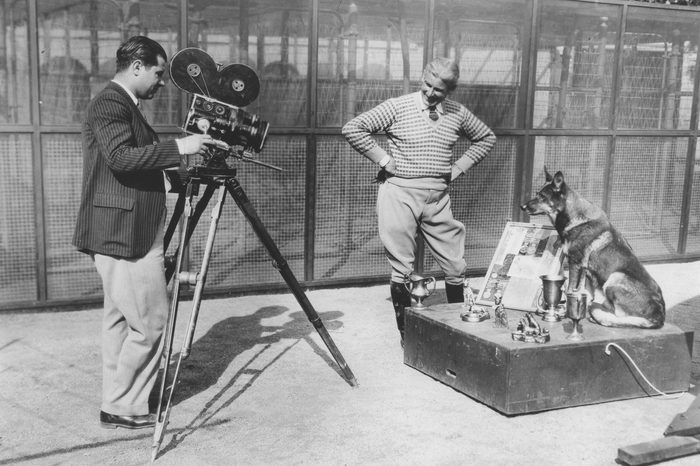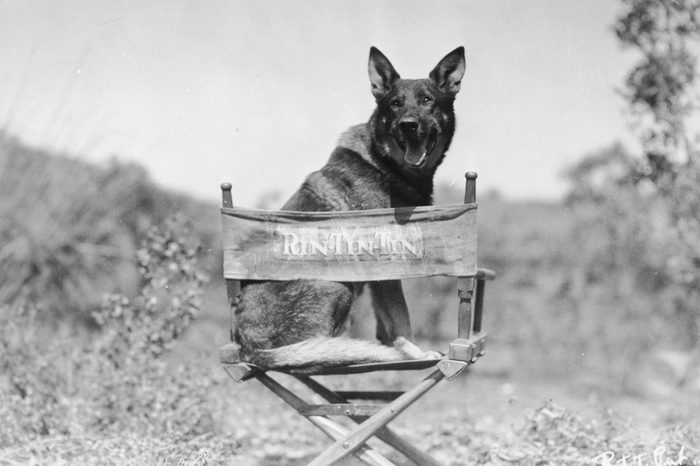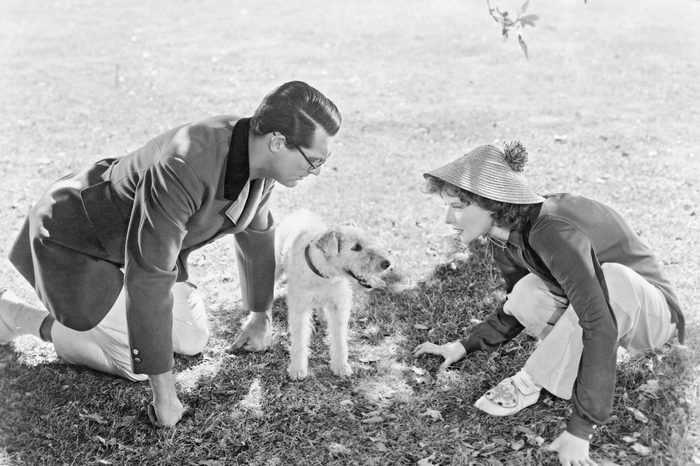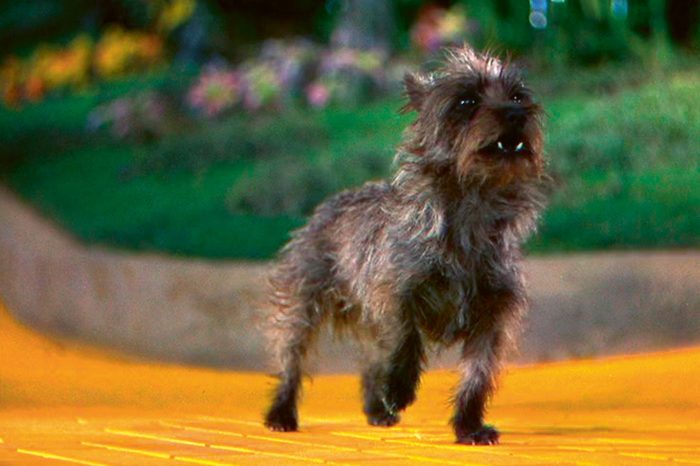Suffice to say, it was pretty good to be a dog actor in early Hollywood

4 Dog Actors That Made More Money Than Humans


Rin-Tin-Tin
There’s a reason people still recognize the name of this famous pooch—nearly a hundred years after he graced the screen. Rin-Tin-Tin was the original movie star dog. Appearing in 26 silent films throughout the 1920s and early ’30s, Rin-Tin-Tin captured the hearts of thousands of Americans in the way only a dog can. This German shepherd was found in a WWI war zone, and after his owner realized how trainable he was, he started snagging major film roles. Among his best-known films are 1923’s Where the North Begins and 1926’s The Clash of the Wolves. (In the latter, he played a wolf—now that’s impressive range!)
According to Citizen Canine: Dogs in the Movies by Wendy Mitchell, he was soon out-earning many humans of the time—as much as $6,000 per week. According to Hollywood legend, he even received more votes for Best Actor at the 1929 Academy Awards than any human! (Sadly for him, and for film history, the Academy decided that the award had to go to a human and gave it to Emil Jannings—but raise your hand if Rin-Tin-Tin’s name is still more familiar to you than Jannings’s!)
Strongheart
Rin-Tin-Tin might have become better known across time, but Strongheart, another German shepherd, is widely considered the first major dog actor! He first appeared on the scene about a year before Rin-Tin-Tin, with his 1921 film The Silent Call. And though he appeared in only six films, he earned some serious cash, eventually becoming a multi-millionaire—in the 1920s! At one point, he was even the highest-grossing star of any species in Hollywood, according to Citizen Canine. Perhaps the reason for his massive stardom is that his fame was more worldwide than Rin-Tin-Tin’s; he was born in Poland and was a German police dog before a pair of Hollywood bigwigs found him. His most famous—and final—film role was in the heist film The Return of Boston Blackie.

Asta
This Wire Fox Terrier wasn’t the biggest star in 1938’s Bringing Up Baby—he shared the screen with Katharine Hepburn and Cary Grant. He didn’t even have the biggest animal role in that film—that would be the titular leopard, Baby. But Asta, née Skippy, proved to be a charming scene-stealer with his comedic barking timing and other antics—and he was well paid for it. His name was changed after his first film role, as a dog named Asta in The Thin Man, which he would reprise in multiple sequels. And according to Citizen Canine, he earned up to $250 a week at his most prolific—while his trainer was earning just $60.

Toto/Terry
You knew this was coming! Rather disconcertingly, that oft-repeated tidbit that Toto was paid more for The Wizard of Oz than many of the Munchkins is true. Though she (yes, she!) was later renamed Toto, the Cairn Terrier that played Dorothy’s faithful companion was actually named Terry. And her paycheck for the 1939 blockbuster was enormous. It wasn’t just more than some Munchkins earned; it was more than double. Terry—or, more accurately, her trainer, Spitz—earned $125 a week on the film, while some of the Munchkins earned as little as $50 a week. The human star of the film did out-earn Terry—Judy Garland was paid $500 a week—but that $125 paycheck is still a whole lot of dough for a dog.
Why trust us
At Reader’s Digest, we’re committed to producing high-quality content by writers with expertise and experience in their field in consultation with relevant, qualified experts. We rely on reputable primary sources, including government and professional organizations and academic institutions as well as our writers’ personal experiences where appropriate. We verify all facts and data, back them with credible sourcing and revisit them over time to ensure they remain accurate and up to date. Read more about our team, our contributors and our editorial policies.




















